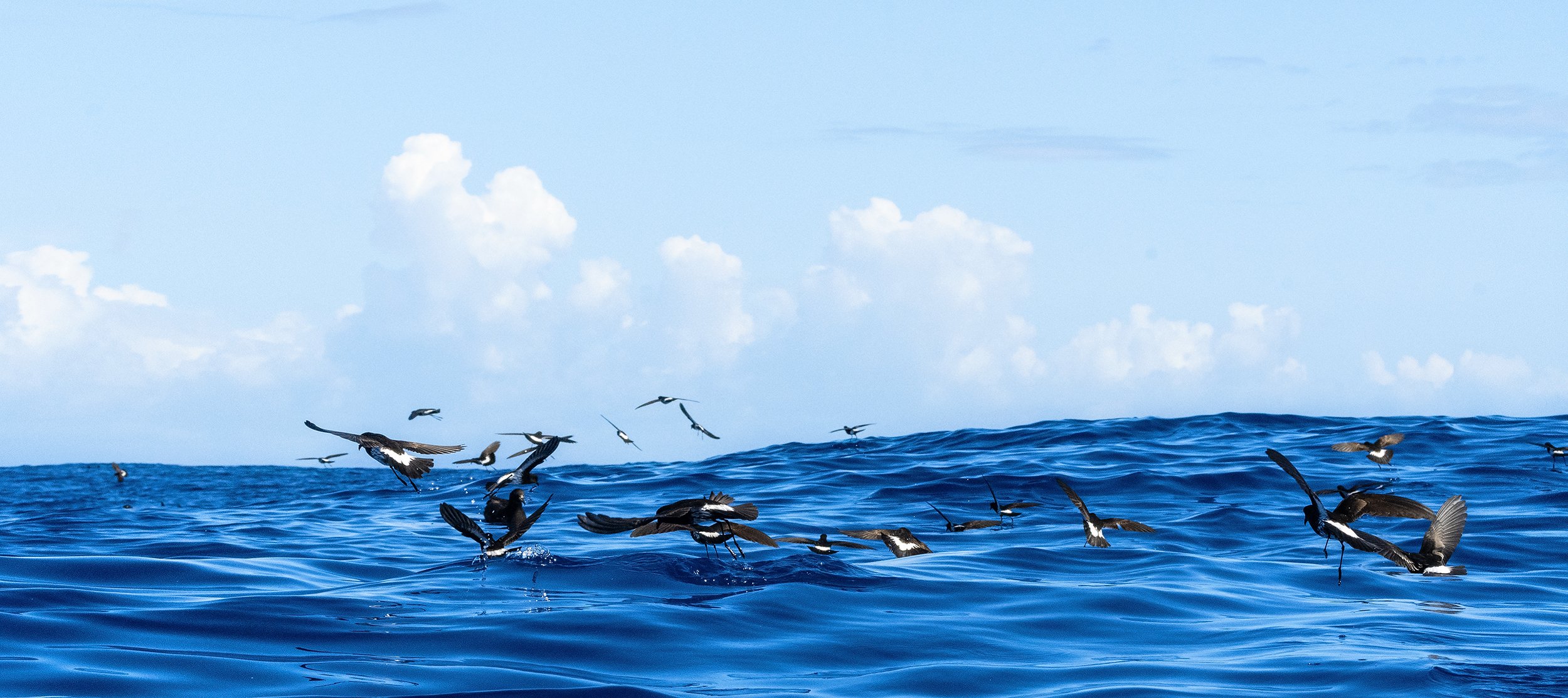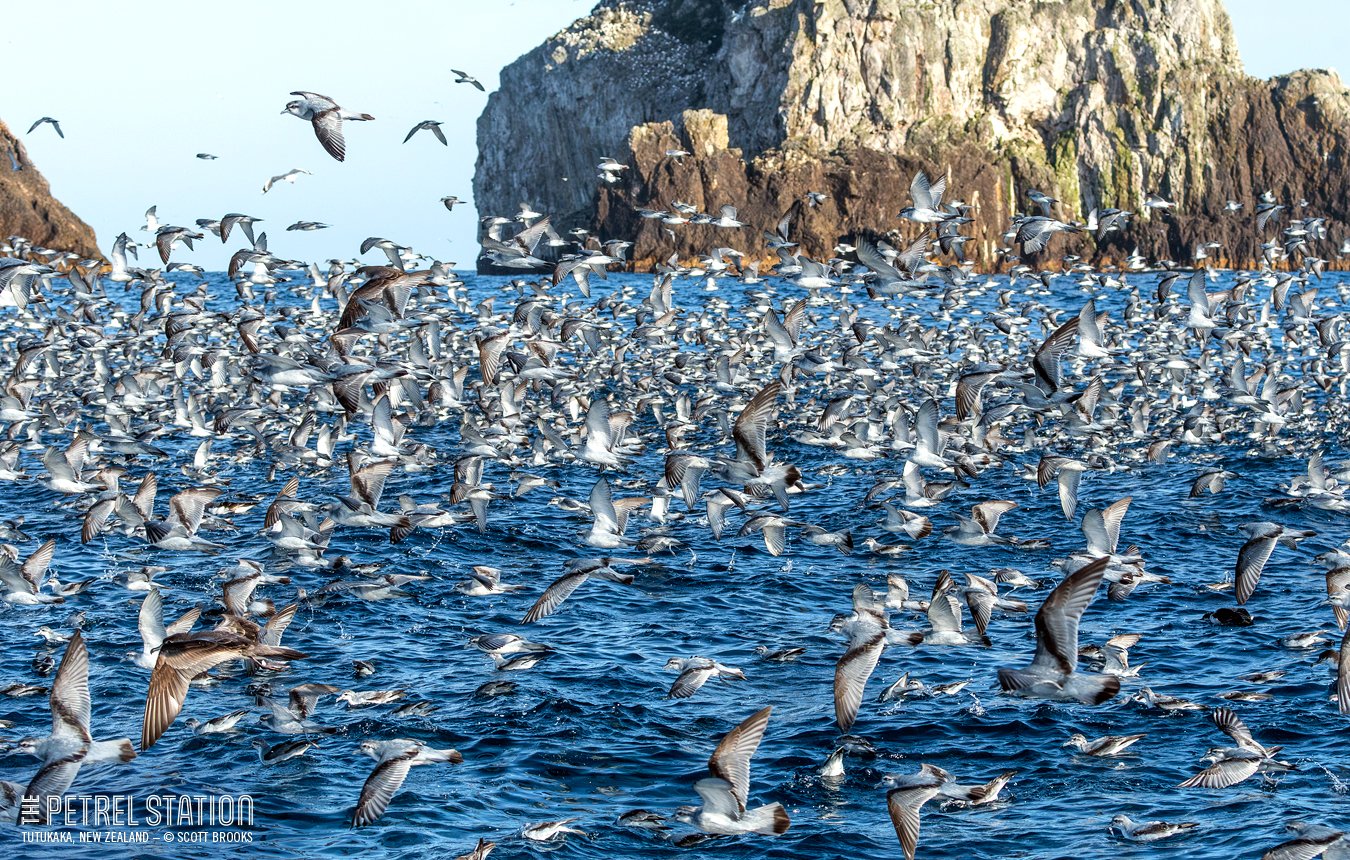
recording & results
Tutukaka, New Zealand
Along with the seabird tours, The Petrel Station Project is also a long term, at-sea, pelagic seabird sighting research project, taking place offshore from Tutukaka, in Northland, New Zealand.
What we’re recording
During the seabird tours we are actively collecting a variety of seabird sighting data:
Seabird species encountered (diversity and total quantities) are recorded throughout the day and collated at a number of predetermined areas. The seabird sightings are uploaded onto eBird.
During the course of the day we visit 3 distinct seabird habitat zones: inshore shallow ocean, around the breeding islands, and out over deeper ocean waters at the continental shelf edge. All 3 zones provide a different diversity of seabirds and behaviours.
During the tours we also record a variety of environmental based data with the aim to establish any links that impact on which seabirds are being encountered, and their behaviour, on any particular day or season:
Weather conditions:
Wind (direction and intensity on the day and few days prior), fine/overcast/rain, barometer reading, air temperature, and any other notable weather eventsOceans conditions:
Swell size, sea surface temperaturesLunar impact:
Tides and moon stages (which both impact on the ocean currents)
We also record any other marine life encountered during the day:
Cetaceans, sharks, manta ray, fish etc are also recorded when we are out on the tours – sighting information can be shared with interested researchers. (Note: we don’t hold permits to interact with marine mammals and any sightings are purely by chance as we travel – we don’t seek them out).
Other seabird research
We are also working towards several other seabird projects that we’d like to undertake while we are out doing the seabird surveys. These will include:
Identifying the plumage variations present within some seabird species. Particularly focusing on Cook’s Petrel and Pycroft’s Petrel which display a wide range of plumage variation, and in some cases overlapping.
Moult - we are currently working towards establishing moult data for a few seabird species we encounter, including New Zealand Storm Petrel. If we can get out regularly throughout the year we will be able to gather insights and photos of the various stages while they are in the area.
Ageing of Albatross that are coming into the northern New Zealand region.
Seabird feeding workup concentrations (size, species present, location, time, krill vs bait ball). In time this will help gauge any increases or decreases of activity in the area.
At-sea seabird behaviour - we are in a great position to observe at-sea seabird behaviour when the birds are away from the breeding islands - this includes flight style in different weather conditions, foraging, interaction with other species. There is still so much to learn about seabirds!
Early results
While the research is still in its early years (with the research starting proper in 2022), the results are already providing interesting outcomes and patterns:
The astounding diversity of seabird species we’ve recorded to date – highlighting this area as one of the world’s most diverse seabird locations.
We’ve established a good understanding of seasonal patterns of many of the species (local breeders, migratory and vagrants) which can be used as base levels for future results to see any changes.
The results are greatly increasing the knowledge of seabird movements around New Zealand, particularly the northern area.
In 2021/2022 The Petrel Station tours (and sightings we recorded from a Kermadec Islands expedition) accounted for 24% of all the rare bird records for New Zealand! Due to this some species which were originally reportable as rare visitors are now no longer reportable species as the research has established this area is within their range in season.
Chatham Albatross and South Polar Skua sightings. Both are rarely seen off the New Zealand mainland and we’ve had them turn up in in late spring for the past few years. This includes the sightings of Dark Morph South Polar Skua (very very rare in New Zealand waters).
New Zealand Storm Petrel being present in large numbers (30+) in spring and summer and a massive 100+ seen during a trip in January. They’ve also been present in every month except August.
how the data will be used
As the at-sea pelagic seabird sightings data grows over the coming years, and resulting patterns are better defined, we are planning to publish a series of scientific papers of the findings around the various aspects of the seabird research that we are studying. These will become available as they are published.
We also add the seabird sightings onto eBird.
Availability of the data
Our findings will be available for relevant environmental organisations to use to help make informed decisions – this will be of benefit to ornithological groups, researchers, universities, Government organisations and regional Councils.
If you are wanting to use the data/findings for commercial purposes there will be contribution costs associated with its usage – please contact us to discuss.
Complimenting other seabird research
The Petrel Station research project results also complement other seabird work being undertaken in New Zealand, and globally, including:
Tracking technology – a limited number of seabirds have been fitted with tracking devices (at their breeding ground), which is providing some great insight into seabird movements. The Petrel Station research works in conjunction with this by providing an additional source of seabird movements and distribution information through the sightings we record.
Research work, population counts and conservation work being done at seabird breeding locations in New Zealand (on islands and the mainland).
Seabird beach patrols where dead seabirds found on beaches are recorded.
Seabird leg banding programmes.

Does being out amongst stunning seabirds sound like you? Must be time to come out to The Petrel Station.



